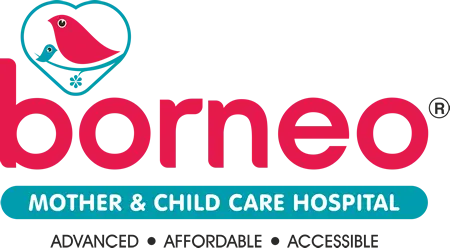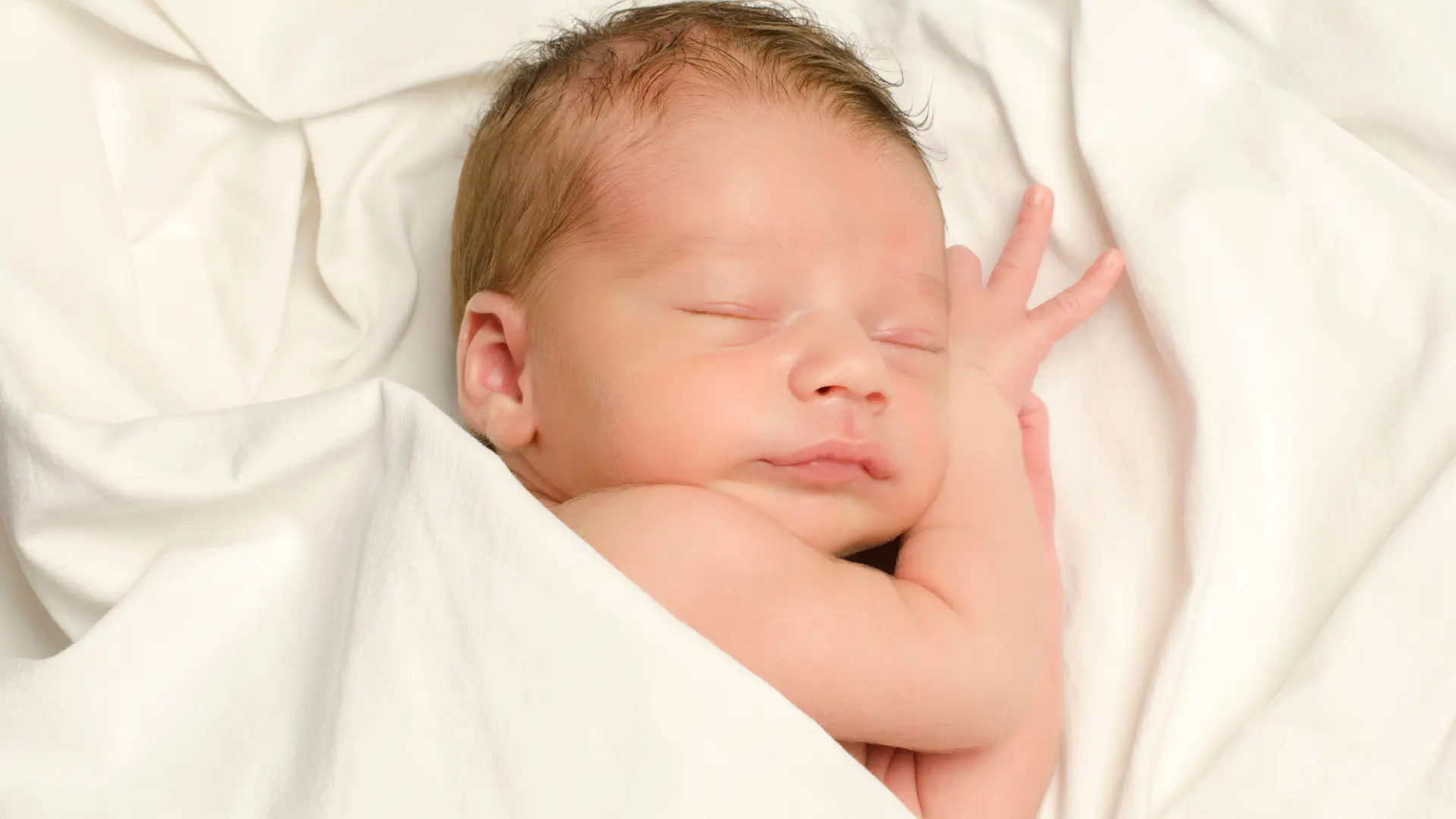There are few moments more peaceful for a new parent than watching their baby sleep soundly. In those quiet times, a sense of calm descends. As parents, our deepest instinct is to protect our little ones, and one of the most critical ways we do this is by ensuring that every single sleep – day or night – is a Safe Sleep.
My name is Dr. Santosh Madrewar, and as a Senior Paediatrician and the Founder of Borneo Hospital, with our dedicated centres for child health in Thane, Nashik, Chhatrapati Sambhaji Nagar, and Raipur City, this topic is one of the most important I discuss with new families. While the subject matter is serious, the great news is that following simple, evidence-based guidelines can dramatically reduce the risk of sleep-related infant tragedies.
This article aims to provide clear, non-negotiable guidance on creating a Safe Sleep for baby environment for your infant. Our goal is to empower you with the knowledge to protect your baby and provide you with peace of mind.
Understanding the Risks: SIDS and Sleep-Related Accidents
When we talk about Safe Sleep for baby, we are primarily aiming to reduce the risk of Sudden Infant Death Syndrome (SIDS) and other sleep-related dangers.
Sudden Infant Death Syndrome (SIDS):
This is the term used for the sudden and unexplained death of a seemingly healthy baby, usually under one year of age, that happens during sleep. The exact cause is unknown, but we know that creating a safe sleep environment significantly reduces the risk.
Other Hazards:
Unsafe sleep environments can also lead to other tragedies like accidental suffocation (from soft bedding or a parent’s body in an adult bed), strangulation (from loose items or cords), and entrapment (when a baby gets trapped between a mattress and a wall or cot side).
While this sounds frightening, please be reassured. The power of prevention is immense, and the steps to create a safe space are straightforward.
The ABCs of Safe Sleep: The Core Message to Remember
To make it easy to remember, paediatricians and health organisations worldwide teach the ABCs of Safe Sleep for baby. Please commit this to memory and share it with everyone who cares for your baby (grandparents, family members, ayahs, nannies).
1. A is for ALONE
This means your baby should always be in their own separate sleep space, like a cot, crib, or bassinet. It does not mean they need to be in a separate room – in fact, room-sharing is recommended. ‘Alone’ refers to the sleep surface itself, which should not be shared with parents, siblings, pets, or anyone else.
2. B is for on their BACK
For every single sleep – both for daytime naps and at night – you must place your baby on their back to sleep until they are one year old. This is the single most effective action you can take to lower the risk of SIDS. Once your baby can consistently roll over from their back to their tummy and back again on their own, you can allow them to remain in the position they choose, but you must always place them down to sleep on their back initially.
3. C is for in a CLEAR COT
This means the sleep space should be completely empty and clear of all items. The only thing in the cot should be your baby. This means no pillows, no loose blankets, no quilts or duvets, no cot bumpers, and no stuffed animals or other soft toys. These items pose a serious suffocation risk.
Creating a Safe Sleep for baby Environment: A Detailed Checklist
Building on the ABCs, let’s look at the components of a Safe Sleep environment in more detail.
1. The Cot, Crib, or Bassinet:
- A Firm, Flat Surface: The mattress should be firm, flat (not inclined), and waterproof. It should fit the cot snugly, with no gaps between the mattress and the sides of the cot where a baby could get trapped. Soft surfaces, like sofas, adult mattresses, or cushions, are dangerous for infant sleep.
- A Tightly Fitted Sheet: Use only a single, well-fitting sheet designed for the mattress. There should be nothing else in the cot. The basic fundamental principle is to keep it bare.
- No Loose Bedding: Loose blankets, pillows, and cot bumpers are significant suffocation and strangulation hazards and should never be used.
2. The Room Environment:
- Room-Sharing (Not Bed-Sharing): The safest place for your baby to sleep is in their own cot or bassinet in the same room as you for at least the first six months, and ideally for the first year. This practice of room-sharing is known to reduce the risk of SIDS and makes night-time feeding and comforting easier and safer.
- Comfortable Temperature: Keep the room at a temperature that is comfortable for a lightly clothed adult (often between 20-22°C). Avoid overheating your baby by overdressing them or using heavy blankets.
- A Smoke-Free Environment: This is absolutely essential. Exposure to cigarette smoke, both during pregnancy and after birth, is a major risk factor for SIDS. Ensure your baby’s sleep environment, and your entire home and car, are always 100% smoke-free.
Other Important Practices for Safe Sleep for baby
1. Swaddling:
Swaddling a newborn can be calming. If you choose to swaddle, ensure it is done correctly – snug around the arms but with plenty of room for the hips and legs to move freely to allow for healthy hip development. Crucially, you MUST stop swaddling as soon as your baby shows any signs of attempting to roll over (this can happen as early as 2-3 months). A swaddled baby who manages to roll onto their front is at a very high risk of suffocation as they cannot use their arms to reposition themselves. And always, always place a swaddled baby on their back.
2. Pacifiers / Soothers:
Studies have shown that offering a clean, dry pacifier (soother) at the start of sleep time is associated with a reduced risk of SIDS. You don’t need to force it if your baby refuses it. If it falls out of their mouth after they are asleep, there is no need to put it back in. If you are breastfeeding, it’s often recommended to wait until breastfeeding is well-established (usually around 3-4 weeks) before introducing a pacifier.1
3. Wearable Blankets / Sleep Sacks:
These are a highly recommended and safe alternative to loose blankets. A sleep sack is a wearable blanket that zips up, keeping your baby warm without the risk of the fabric covering their face. This is an excellent choice for a Safe Sleep environment.
What to AVOID: A Critical List of “Don’ts”
For clarity, here is a list of things to always avoid:
- DO NOT let your baby sleep on a sofa, armchair, cushion, beanbag, or adult bed.
- DO NOT use pillows, cot bumpers, quilts, duvets, sheepskins, or soft toys in your baby’s sleep space.
- DO NOT let your baby get overheated. Feel their chest or the back of their neck to gauge their temperature (their hands and feet often feel cooler, which is normal). Avoid putting hats on your baby for sleep indoors.
- DO NOT rely on commercial devices like home breathing or heart rate monitors that claim to prevent SIDS. There is no evidence they work, and they cannot replace following Safe Sleep guidelines.
- DO NOT ever place your baby to sleep on their side or tummy. Back to Sleep, for every sleep.
Addressing the Indian Context: The Bed-Sharing Discussion
Co-sleeping or bed-sharing is a common cultural practice in many Indian families, often done for bonding, convenience, and cultural tradition. As a paediatrician, I must address this topic with both respect and a clear focus on safety.
While culturally ingrained, numerous international medical studies have confirmed that bed-sharing significantly increases the risk of SIDS and accidental suffocation, especially under certain circumstances.
Bed-sharing is PARTICULARLY DANGEROUS if:
- Your baby is less than 4 months old.
- Your baby was born prematurely or with a low birth weight.
- Either parent is a smoker (even if you never smoke in the bedroom, the risk is much higher).
- A parent has consumed alcohol, any sedating medications or drugs, or is extremely exhausted (making them less responsive).
- The bed has soft bedding, duvets, or many pillows near the baby.
- Other children or pets are also in the bed.
The Safest Alternative:
We strongly recommend the practice of room-sharing without bed-sharing. This means having your baby’s cot or bassinet right next to your bed. You are still close enough to hear them, comfort them, and easily attend to them for night feeds, while providing them with their own protected, clear, and Safe Sleep space. This approach gives you the closeness you desire while upholding the highest safety standards for your baby.
Your Paediatrician’s Role at Borneo Hospital
At Borneo Hospital, discussing Safe Sleep practices is a non-negotiable, vital part of every well-baby check-up. Myself and my paediatric colleagues across all our branches (Thane, Nashik, Chhatrapati Sambhaji Nagar, Raipur) are here to answer your questions, demonstrate safe practices, and provide you with the most current, evidence-based safety information to protect your child. We consider it our duty to be your partners in this.
Caring for a newborn involves many new skills and responsibilities, but creating a safe sleep environment is one of the most important things you will ever do to protect your baby. The guidelines are simple, evidence-based, and highly effective.
Please, always remember the ABCs of Safe Sleep: place your baby Alone on their Back in a Clear cot for every sleep. Following these simple rules provides immense peace of mind and, most importantly, keeps your precious baby safe while they sleep. At Borneo Hospital, we are unwavering in our commitment to your child’s health and safety, starting from day one.


